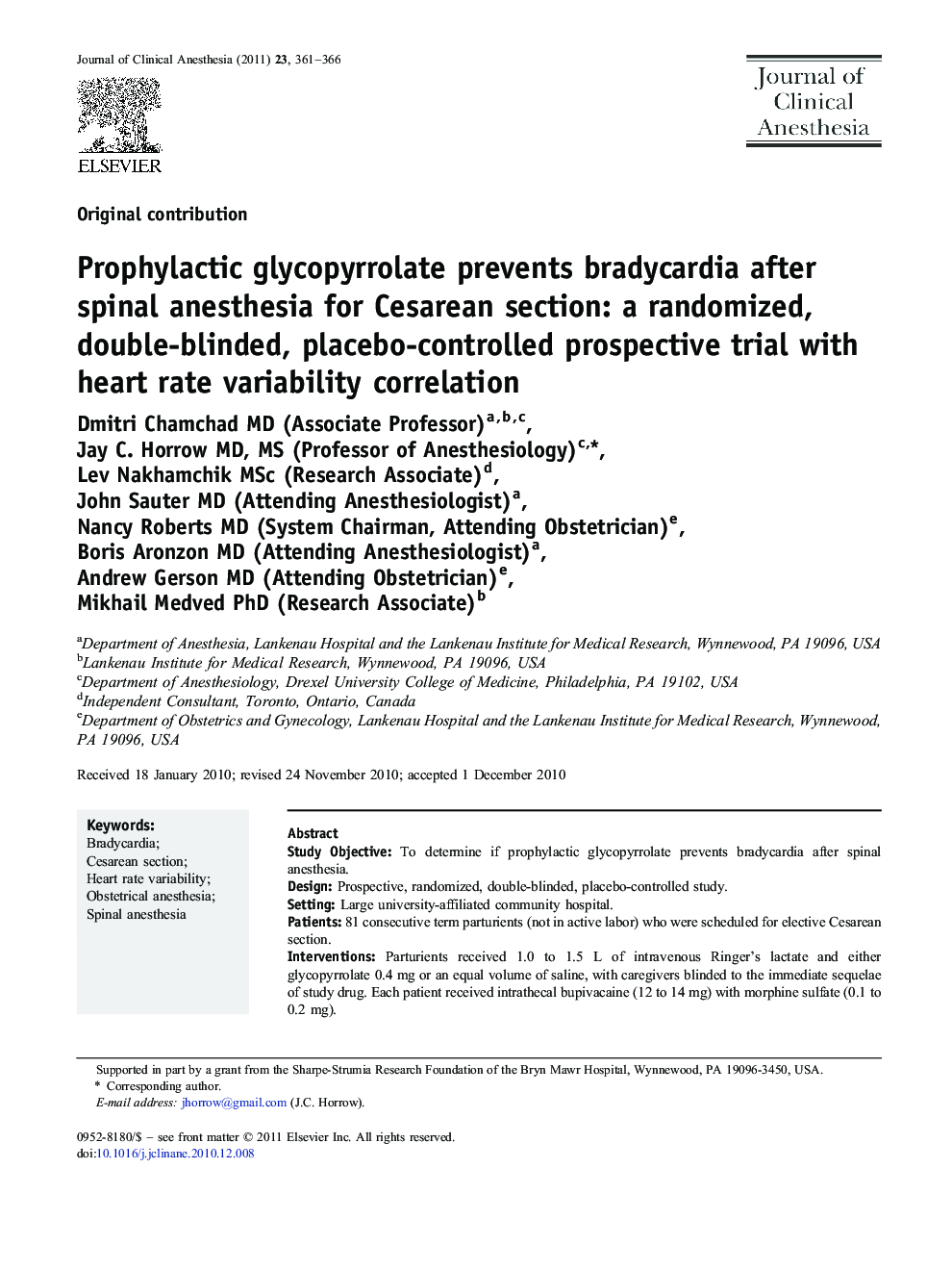| Article ID | Journal | Published Year | Pages | File Type |
|---|---|---|---|---|
| 2763341 | Journal of Clinical Anesthesia | 2011 | 6 Pages |
Study ObjectiveTo determine if prophylactic glycopyrrolate prevents bradycardia after spinal anesthesia.DesignProspective, randomized, double-blinded, placebo-controlled study.SettingLarge university-affiliated community hospital.Patients81 consecutive term parturients (not in active labor) who were scheduled for elective Cesarean section.InterventionsParturients received 1.0 to 1.5 L of intravenous Ringer's lactate and either glycopyrrolate 0.4 mg or an equal volume of saline, with caregivers blinded to the immediate sequelae of study drug. Each patient received intrathecal bupivacaine (12 to 14 mg) with morphine sulfate (0.1 to 0.2 mg).MeasurementsContinuous heart rate (HR) and blood pressure monitoring occurred for 20 minutes, with the minimum HR recorded for each 5-minute epoch. Heart rates < 60 beats per minute defined bradycardia. Heart rate variability (HRV) analysis occurred offline.Main ResultsNone of 34 patients administered glycopyrrolate and 6 of 35 (17%) patients receiving saline experienced bradycardia (P = 0.02476). Time domain, frequency domain, and nonlinear and embedded spectrum entropy analyses all reflected the decrease in HRV accompanying administration of glycopyrrolate.ConclusionBradycardia after spinal anesthesia occurs commonly. Prophylactic glycopyrrolate may prevent the bradycardia, but not necessarily the hypotension.
